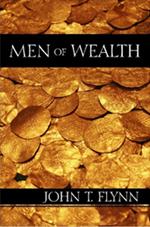This article is excerpted from As We Go Marching, part 1, chapter 10. An MP3 audio file of this article, read by Dr. Floy Lilley, is available for download.
Mussolini became premier in October 1922. With the innumerable arguments about the march on Rome or with the story of the violent, lawless, and outrageous tactics he used to come to power we are not concerned here. That history has been told many times. Our business is to see the use he made of his power to fashion a new form of society.
He did not have a majority in parliament. He had to form a coalition cabinet which included a moderate socialist and a member of the Popolari. Some liberal politicians saw the hope of a stable government and the General Confederation of Labor (socialist) agreed to collaborate. Mussolini, of course, began to move toward dictatorship. But the full dictatorship did not come until 1925, after the assassination of Matteoti.
We will now see the elements of the fascist society emerge – point by point. First we must note one important difference between Communism and Fascism which becomes clear here. Socialism has a definite philosophy, based upon clearly enunciated principles which had long been debated and were widely understood. Socialists disagreed among themselves on certain points and upon programs of action. But socialism as a system of social structure with an organized body of doctrine was well understood. This was not true of Fascism. Whether it was capitalist or anticapitalist, labor or antilabor, no one could say until the leaders themselves decided upon a course of action. It was improvised as the movement went along. Therefore we cannot define Fascism as a movement committed to the collection of principles enunciated in its formal proclamation of principles and objectives – the Eleven Points of San Sepolcro. Mussolini, being in pursuit of power, made that objective the mold by which his policies were formed. Behold now the erection of the great Fascist edifice.
John Thomas Flynn (1882–1964) was an outspoken critic of the Roosevelt administration’s domestic and foreign policy decisions, opposing both the New Deal and the Second World War. As Mises Institute senior fellow Ralph Raico described Flynn in his introduction to the 50th anniversary edition of The Roosevelt Myth, “There is little doubt that the best informed and most tenacious of the Old Right foes of Franklin Roosevelt was John T. Flynn.”










